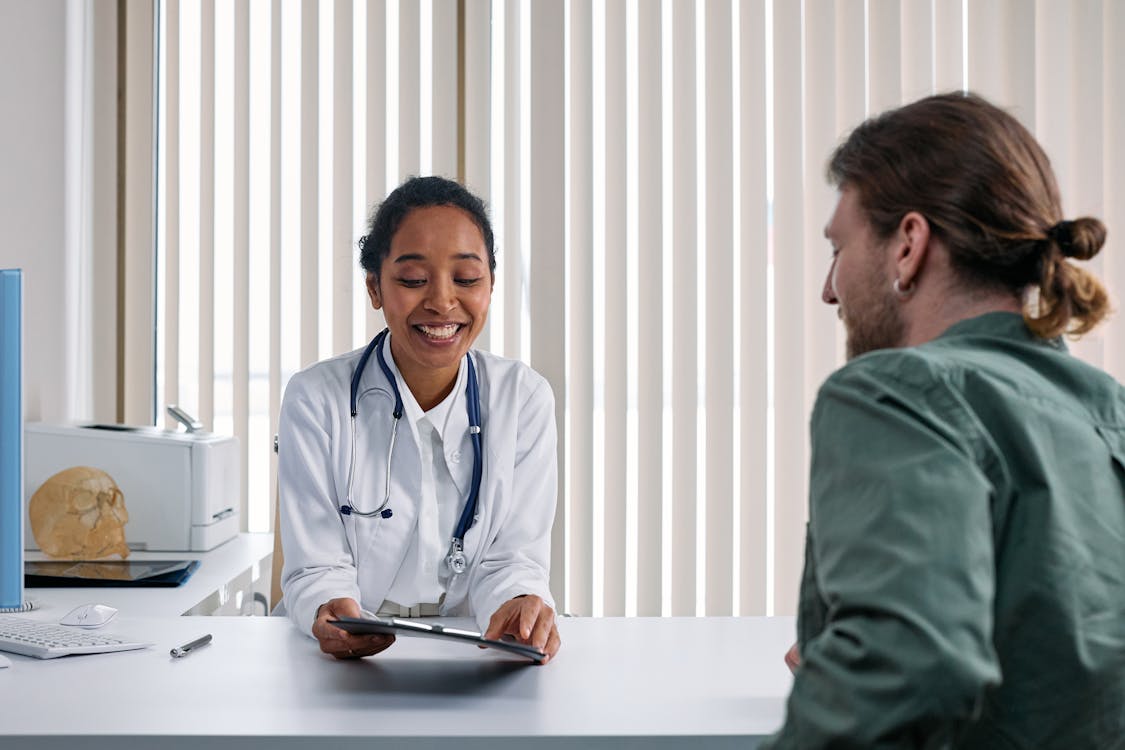
When Are You Least Likely to Get Pregnant? A Comprehensive Guide
Discover the times in your menstrual cycle when pregnancy is least likely. Learn about fertility windows, tracking methods, and factors that affect your chances.

Discover the times in your menstrual cycle when pregnancy is least likely. Learn about fertility windows, tracking methods, and factors that affect your chances.

At 5 days past ovulation (DPO), it's often too early for true pregnancy symptoms. Learn what's happening in your body, common signs, and when to test.

Is it safe to use baby oil as a sexual lubricant? Medical experts say no. Learn about the risks, including condom failure and infections, and discover safer alternatives.

Explore the science and safety of using acupressure points like SP6 and LI4 to induce labor naturally. Learn the techniques, timing, and when to consult your doctor.

Concerned about a 'skinny penis'? Explore the facts about average penis girth, what partners really think, and medically-reviewed options for enhancement.

Noticing white particles in your urine? Learn about common causes like UTIs, kidney stones, and dehydration, and find out when you should see a doctor.

A comprehensive guide to understanding and managing dry mouth during pregnancy. Learn about causes, from hormones to gestational diabetes, and find safe remedies.

Feeling bloated and gassy after childbirth? Our complete guide covers the causes of postpartum gas, effective relief strategies, and red flags to watch for.

Confused by a bump in your genital area? Learn the key differences in appearance, symptoms, and causes between herpes and ingrown hairs. Get expert advice.

Discover the A-spot (Anterior Fornix), a deep erogenous zone. Learn its location, how it differs from the G-spot, and techniques for enhanced pleasure.

Trans women don't menstruate but can experience period-like symptoms from HRT. Learn the science, the lived experience, and how it differs for trans men.

Explore the health benefits, fertility impacts, and potential side effects of daily ejaculation. We debunk myths and provide science-based answers for all ages.
Reproductive health is a fundamental aspect of human life, yet its definition is often misunderstood and narrowed to just a few issues. Far more than the absence of disease, it is a state of complete physical, mental, and social well-being in all matters concerning the reproductive system. According to the World Health Organization (WHO), this comprehensive view means people have the ability to have a safe and satisfying sex life, the capacity to reproduce, and the freedom to decide if, when, and how often to do so.
This guide provides a definitive look at reproductive health, synthesizing information from leading health authorities, recent studies, and real-world reports to create the most comprehensive resource available. We will explore its core components, the services it includes, and the complex factors—from environmental exposures to legal frameworks—that shape reproductive well-being for all individuals throughout their lives.
Reproductive health is a multidimensional concept that rests on a foundation of physical, mental, and social well-being. It is not just about organs and hormones but about rights, choices, and dignity.
The WHO identifies five core aspects of ensuring reproductive and sexual health globally:
Reproductive healthcare provides the essential services and support needed to maintain well-being across all life stages. These services are diverse and tailored to individual needs and goals.

This is a cornerstone of reproductive health, enabling individuals to prevent unintended pregnancies and plan their families. Services include counseling on and access to a variety of contraceptive methods, from birth control pills and condoms to long-acting reversible contraceptives (LARCs) like IUDs and implants, as well as emergency contraception.
Providing comprehensive care during pregnancy, childbirth, and the postpartum period is critical for the health of both parent and child. This includes prenatal check-ups, safe delivery services, and postnatal care to monitor recovery and support newborn health.
For those who wish to conceive, reproductive healthcare offers counseling, testing, and treatments for infertility. This can include assisted reproductive technologies (ART) such as in vitro fertilization (IVF).
This involves screening, testing, and treatment for STIs like HIV, syphilis, and chlamydia. It also includes preventive measures like the HPV vaccine to prevent reproductive cancers and comprehensive sexuality education that empowers individuals to make informed decisions.
Regular screenings are vital for the early detection and treatment of cancers affecting the reproductive organs. This includes Pap tests for cervical cancer, mammograms for breast cancer, and screening for uterine and ovarian cancers.
Access to safe, legal abortion is a critical component of comprehensive reproductive healthcare. This includes medical and surgical procedures, as well as post-abortion counseling and care.
Reproductive health is not exclusive to women. It also includes care for men, addressing issues such as low sperm count, erectile dysfunction, and cancers of the male reproductive system.
Reproductive health concerns evolve throughout a person's life, from adolescence through the post-reproductive years. This lifelong perspective challenges the narrow focus on childbearing and embraces a more holistic view of well-being.
An individual's reproductive health is shaped by a complex interplay of personal, environmental, and systemic factors. Achieving true reproductive well-being requires addressing these influences comprehensively.
Research from the National Institute of Environmental Health Sciences (NIEHS) shows that exposure to environmental factors can significantly impact reproductive health.
Profound disparities in reproductive health outcomes persist in the United States and globally. Socioeconomic status and race are major determinants of health, creating an unjust landscape of care.
The concept of Reproductive Justice, a term created by Black women in 1994, provides a crucial framework for addressing these issues. It argues for the human right to maintain personal bodily autonomy, have children, not have children, and parent the children we have in safe and sustainable communities.
The legal landscape is a powerful determinant of access to reproductive healthcare. In the U.S., the reversal of Roe v. Wade has created a "patchwork system" where access to abortion and other services varies drastically by state. This legal uncertainty forces many to travel for care and has led to funding cuts that impact a wide range of services beyond abortion. As seen in Wisconsin, some Planned Parenthood clinics have been forced to halt abortion care due to changes in federal funding, limiting access to essential health services for low-income patients.
A collage of diverse hands holding signs at a peaceful rally for healthcare rights and access.
Addressing the complex challenges in reproductive health requires a multifaceted approach that combines policy advocacy, community engagement, and a commitment to health equity.
Reproductive health is an expansive, essential, and deeply personal aspect of life that extends far beyond childbearing. It is a lifelong journey encompassing physical, mental, and social well-being for all individuals. By embracing this comprehensive definition and working to dismantle the barriers of inequity, we can move toward a future where everyone has the autonomy, resources, and support to make informed decisions about their bodies and their lives.